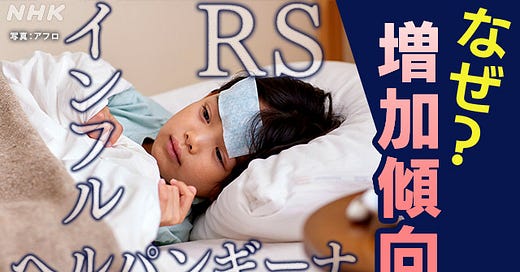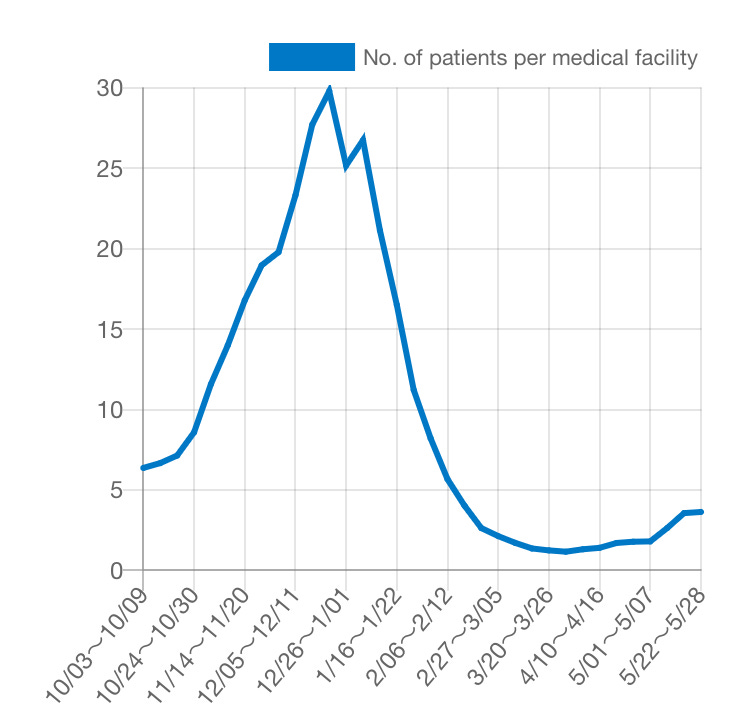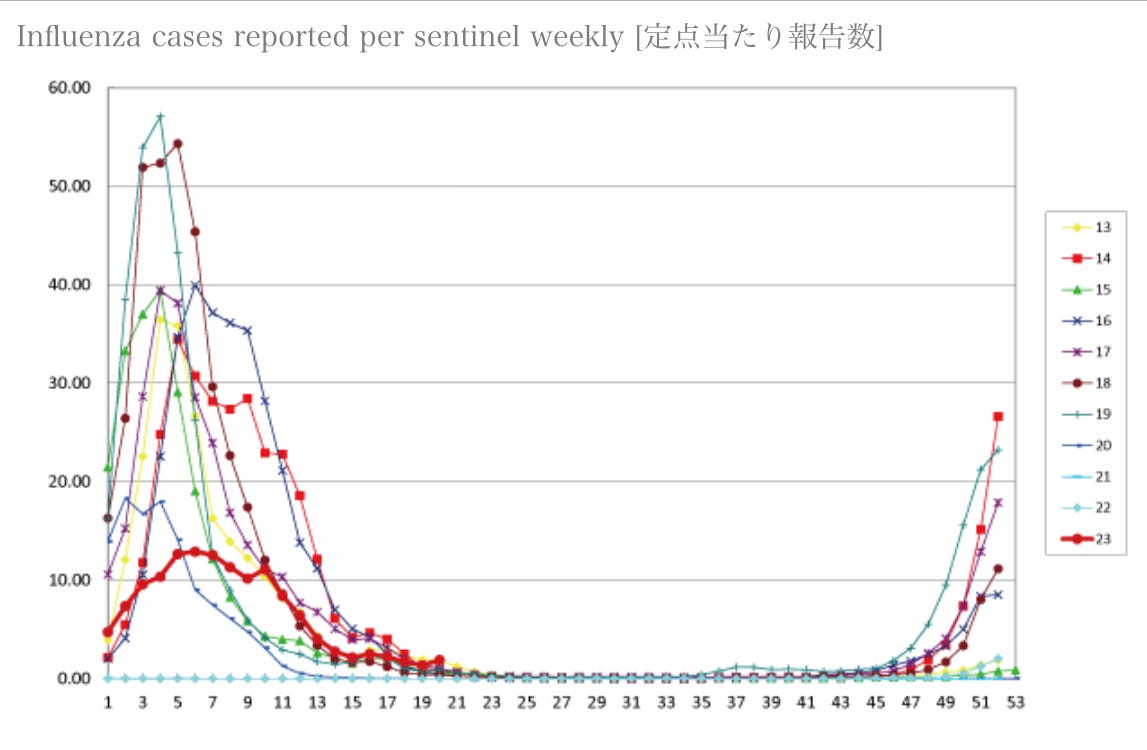It’s now been 3 months since Japan became mask optional and 1 month since all formal Covid restrictions were lifted. But despite the mask rate gradually going down, there’s not much sign of the surge in Covid patients that Japan’s media and experts spent so long warning about1.
So what can the media and experts do to keep viral fear alive and stop people wondering why Covid cases aren’t increasing in line with the number of unmasked people? Luckily for them, there are other viruses to hype up, such as the flu, respiratory syncytial virus (RSV), and herpangina. Even better from a propagandist’s perspective, these viruses often affect kids worse than Covid, which makes fearmongering to parents less of an effort.
The experts’ predictable explanation for rises in cases of non-Covid viruses is that the Covid measures such as universal masking supressed the spread of other infectious diseases, leading to lower immunity in younger populations. Thus, when people started taking their masks off, these viruses started to spread more widely. Simple.
So how bad are these surging waves of non-Covid diseases? From NHK.
According to the National Institute of Infectious Diseases (NIID), there were 7,975 influenza patients reported by approximately 5,000 medical institutions nationwide in the week ending May 28, and the number of patients per medical institution was 1.62. Influenza is usually prevalent from December to March, but this is the first time since 2013 that the number of patients per medical institution exceeded 1, which is the standard for influenza, in late May.
Wow, the first time in 10 years! So let’s take a look at the NIID’s data for the last 10 years of the flu, shall we?
So flu cases were almost 10 times higher back in February when everyone was still masking 24/7 and have been trending downwards since masks became optional. So much ado about next to nothing.
So what about RSV and herpangina, which predominantly affect young children? From the Yomiuri Shimbun
Since Covid-19 was downgraded to Category 5 under the Infectious Diseases Act, the number of colds among children has increased sharply. According to data released by the National Institute of Infectious Diseases on June 6th, cases of herpangina, a type of summer cold, have increased fivefold since the downgrading, and cases of respiratory syncytial virus (RSV) have doubled.

RSV has doubled and herpangina has quintupled! What more evidence do you need that the Covid measures worked? Think of the children! Mask the kids!
But if the lifting of Covid measures explains the recent rise in RSV, what explains the massive RSV wave in Japan in 2021, when everyone was masked and bars and restaurants had to close at 20:00? And cases in 2022, when everyone was masked, were similar to in 2018 and 2019, when hardly one was.
As for herpangina, its rise is early, but the numbers are hardly worth making a fuss over.
Interestingly, herpangina cases were very low in 2020-2022. So have we finally found an infectious disease that masks and other Covid measures are actually effective against? Well, it’s spread through not only respiratory droplets but also the fecal-oral route, so maybe all that hand sanitiser wasn’t a complete waste after all. Whatever the reason, it’s not a disease worth getting too carried away over. From Wikipedia.
Treatment is usually supportive only, as the disease is self-limiting and usually runs its course in less than a week.
In summary, in lieu of rising Covid cases, Japanese media will gladly hype up any other cold or flu that’s doing the rounds in order to convince the public that three years of masking did actually “stop the spread” of some infectious diseases, just not Covid. Incidentally, GlaxoSmithKline recently received the first ever approval for an RSV vaccine for people over 60 in the US and EU. Japan will no doubt follow soon. Moderna has developed an mRNA vaccine for RSV too. And the NIH will soon start trials of a universal flu vaccine using the mRNA platform.
It looks like Covid’s downgrading doesn’t just mean Covid being treated more like the flu and RSV; it also means the flu and RSV being treated more like Covid.
Covid cases are now reported weekly on the basis of a sentinel reporting system: the number of cases divided by the number of reporting medical institutions. Flu, RSV, and herpengina cases are reported the same way.










Well I know 2 things: whatever they say about the new whatever-it-is, to jabs and masks I say, NO thank you. Most people though, still don't have a clue about the problems with jabs and masks, and they don't care to get a clue, either. But it is changing. The future will undoubtedly be Interesting.
They sure love the face rags over there. Some still do on the East Coast of the U.S. as well. I have seen an uptick in mask wearing over the past few days here due to the wildfires and bad air quality. The “experts” are advising people to wear a “high quality” N-95 masks when outdoors. Some people are happily back in their masks. Of course no one thinks to ask if they have any evidence that such masks actually stop tiny hazardous fine particulate matter produced by wildfires. I have actually read that most of these particles are too small for an N-95 to stop from penetrating the mask. So, we are back to the same old stupidity that we have followed over the past three years. Humanity is a total clown show.